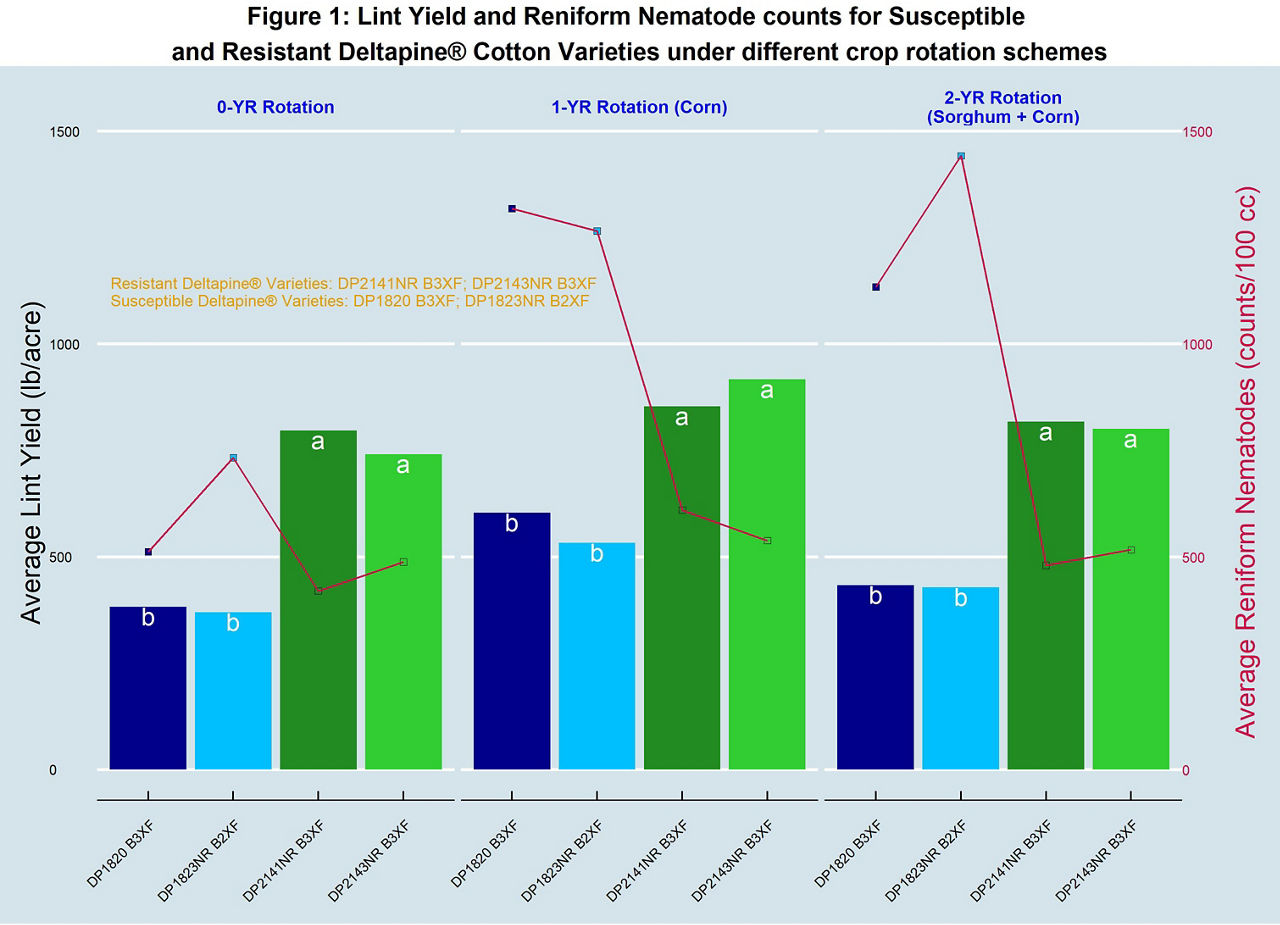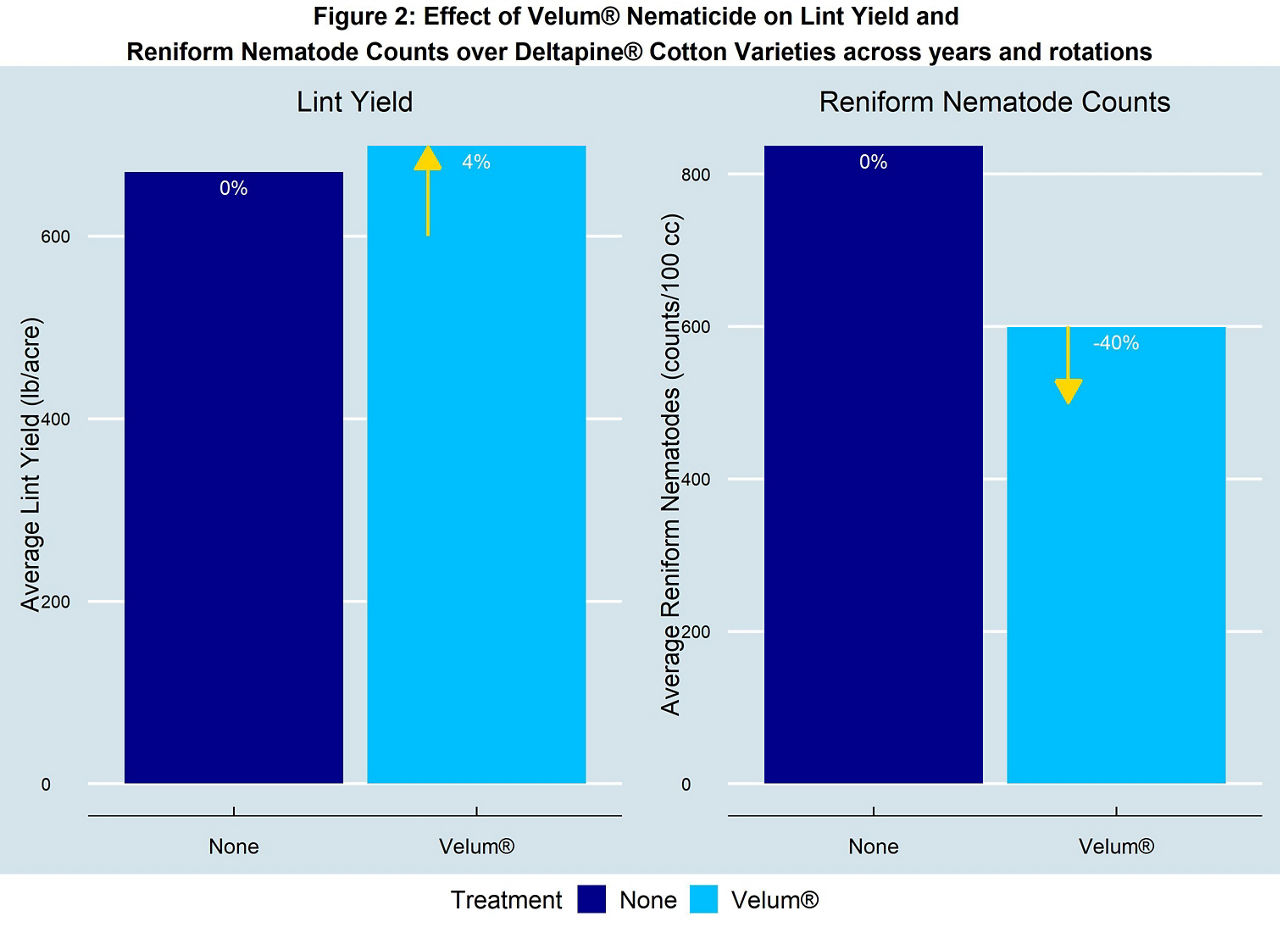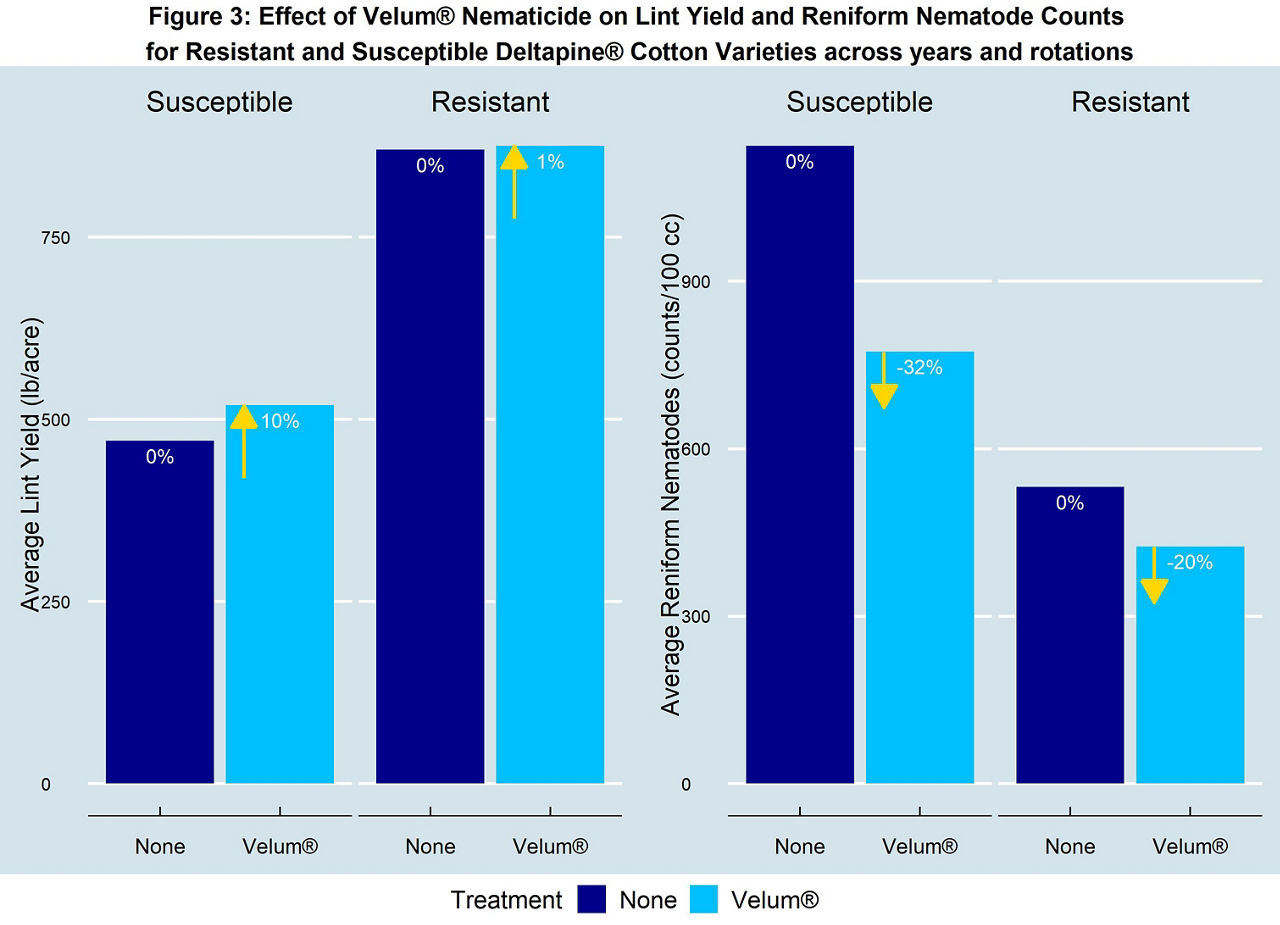Tailored Solutions to Manage Reniform Nematodes in Cotton
August 30, 2022
Introduction
Reniform nematodes are economically important pests causing multimillion-dollar losses in cotton every year.1 Due to the increasing severity of this nematode, a study was conducted in 2020 and 2021 to evaluate a tailored solution approach to managing reniform nematodes. This study compared individual management practices of planting resistant Deltapine® cotton varieties, crop rotation, and nematicide application as well as combinations of these management tools. The study was designed as a split-plot experiment with cotton variety as the main-plot and Velum® nematicide treatment as the sub-plot. Experiments were conducted under 1-, and 2- year (YR) rotations in 2020 and 0-, 1-, and 2-YR rotations in 2021 on a high reniform nematode infested field in New Home, TX. Results from this experiment were used to draw conclusions and recommendations below.
Impact of Deltapine® Reniform Resistant Varieties
In this study, Deltapine® reniform resistant varieties showed increased yield with reduction in reniform nematode counts compared to susceptible varieties under three rotation schemes (Figure 1). This demonstrates the effectiveness of Deltapine resistant varieties in managing reniform nematodes. Results also suggest that planting Deltapine resistant varieties behind susceptible varieties (i.e., 0-YR rotation) resulted in higher yields compared to planting susceptible varieties behind 1-YR and 2-YR rotations. Selecting Deltapine nematode resistant varieties may help reduce the need for crop rotations to manage reniform nematodes (Figure 1).

Impact of Velum® Nematicide
In this two-year study, using Velum® nematicide across resistant and susceptible varieties and rotations resulted in increased lint yield and reduced nematode counts (Figure 2).

Combined Impact of Velum® Nematicide and Deltapine® Resistant Varieties
Data was combined across years and rotations to evaluate the impact of Velum® nematicide on resistant and susceptible varieties. Results showed higher impact of Velum nematicide on susceptible varieties for lint yield and nematode counts (Figure 3). Velum nematicide also reduced nematode counts for the resistant varieties with relatively small increase in lint yield (Figure 3).

Conclusion
Results from this study showed that a tailored solution approach that includes planting Deltapine® resistant varieties combined with Velum® nematicide application can help growers battle reniform nematodes to increase productivity on reniform infested fields. At this location, availability of resistant varieties reduced the need of crop rotation to manage reniform nematodes.
Source:
1Proceedings of the Beltwide Cotton Conference. National Cotton Council of America. 2022: 219-222. https://www.cotton.org/beltwide/proceedings/2005-2022/index.htm
1411_40501